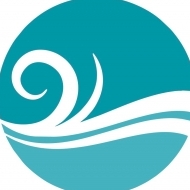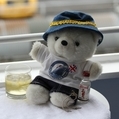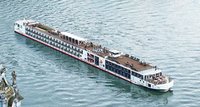The Truth About Life Raft Survival
If your ship sinks and you’re stranded, without food or water, with only an open boat and your own resources, can you stay alive?
Sure!
This was proven in rather dramatic fashion by Frenchman Alain Bombard, who believed people could survive such trials. On October, 19, 1953 he voluntarily set off from the Canary Islands to cross the Atlantic in a 15 foot rubber boat. He intended to make it to the West Indies. Not a scrap of food. Not a drop of water. Just his clothes and an inflatable cushion.
Bombard believed that shipwreck survivors died drinking seawater simply because they waited too long to do so. From the time he set off, he drank 1.5 pints (.71 liters) of seawater every day. He supplemented this with water squeezed from fish caught with a makeshift harpoon. Gross? Yes. But not as bad as the raw plankton he swallowed. He would trail a cloth through the sea to capture the microscopic organisms, figuring if they could keep a whale alive, then he’d have no problem. Unlike a whale, which can gobble zillions of the stuff with one big mouthful, he struggled to get one or two teaspoons of it a day. After twenty days of this self-induced torture, he broke out in a painful rash.
But he wasn’t dead.
Not that the sea didn’t try. A storm within days of setting out nearly wrecked his little rubber boat. His sail ripped and the spare was blown away entirely. More distressing still was what else it blew away: his inflatable cushion. Knowing he could live without food and water, but not without a comfortable posterior, Bombard secured his craft with a sea anchor and jumped overboard after it. While he was diving, he discovered to his horror that the sea anchor was not working. This parachute-like device was tied to the boat and left to drag in the ocean, thus keeping the craft nearby. Without it, the current was sweeping the boat hopelessly out of reach. Luckily the sea anchor fixed itself—it had been caught in its own mooring line—and he was able to haul himself back aboard. Strangely, whether he retrieved the cushion or not was never revealed.
Weeks passed, but Alain Bombard did not die. He survived off of seawater, plankton, and whatever raw fish he could catch at the surface. On day 53 he hailed a passing ship to ask his position. Sadly, he had another 600 miles to go before reaching his intended destination. He seriously considered giving up, for had he not already vindicated his supposition that man could survive on sea water? After a meal on the ship, his spirits were revived, however, and he voluntarily returned to his little rubber boat.
On Christmas Eve he reached Barbados, having sailed more than 2,750 miles (4425 kilometers) in 65 days. He lost 56 pounds (25 kilograms), but was otherwise fine. And that was in an open boat with nothing. If your cruise ship goes down and you’re in a life raft, it has a roof. That makes a huge difference. Also, life rafts are equipped with emergency rations of food and water, and even fishing kits. Most importantly of all, however, is that modern life rafts have radio transponders. You won’t have to wait months. Probably not even days.
The moral of the story? If your ship goes down, don’t panic. Be awesome. You absolutely have it in you. It's just gonna taste really bad.
By Brian David Bruns, author of national best-seller Cruise Confidential.
Pics of the people and places I blog about are on my website and FB pages, join me!














4 Comments
Recommended Comments